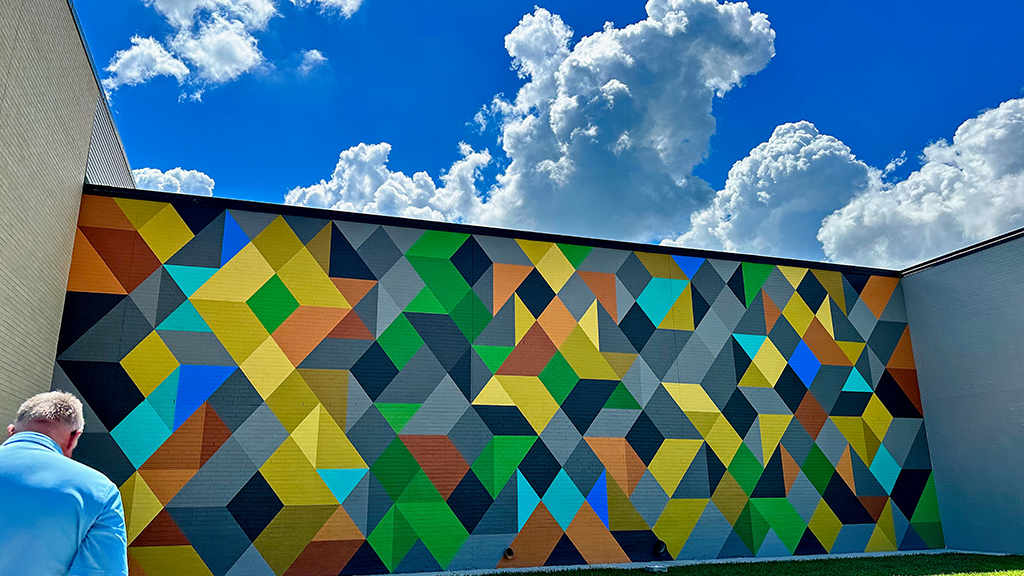
AN OUTDOOR MURAL COVERS THE BRICKED-IN WINDOWS OF SANTA FE HIGH SCHOOL WHERE A 2018 SHOOTING
OCCURRED. THE ART ROOMS REMAIN PERMANENTLY SEALED OFF. (ALL PHOTOS BY GLENN COOK)
The school board meeting in September lasted 51 minutes, quite a contrast to one held the same month four years earlier.
Parents, community members, survivors, and television cameras crowded that September 2018 meeting in Santa Fe, Texas. Grieving, tearful, and angry, those in the audience demanded that the board chairman and superintendent resign over their handling of a shooting that left 10 dead and 13 injured at the high school four months earlier. Public comments alone took almost two hours.
“There was no trust. We were doing nothing but backpedaling against mistaken information,” recalls Rusty Norman, who was board chairman that evening and has remained in the position since. “Everything we were doing was playing catch up, and it was prohibiting us from moving forward.”
That phrase — “moving forward” — is a recurring theme for school leaders in this 4,400-student district. Four-plus years after the tragedy, commonly referred to as “May 18” by those who lived through the experience, the school district is persevering despite several years of traumatic events and persistent reminders of a day no one can forget.
“This is a faith-based community, and people want to believe everything happens for a reason,” says Kevin Bott, who became superintendent in July 2021. “We’ve got kids here who deserve great experiences and great things. This community deserves healing and progress because they’ve endured so much. It’s time for them to feel the blessing of academic, athletic, and student success. They’re ready for it. They’re hungry for it.”
Rachel Harris, who was in her first year as the high school principal when the shooting occurred, says her staff is starting to become “more confident” about the future as the fifth anniversary approaches. She attributes it in part to the passage of time — the last class that was on campus that morning graduated in 2021 — and to a genuine desire and conscious effort to heal.
“We’re not stepping on eggshells as much. You don’t hear people say, ‘Wait, wait, wait. We need to slow down,’ anymore,” Harris says, noting school was held this past May 18 for the first time since the shooting. “Overall, not in every case, but overall, the community and the high school have gotten to a place where we want to focus on the positive and on making things better. Always remember. Never forget. But let’s move forward.”
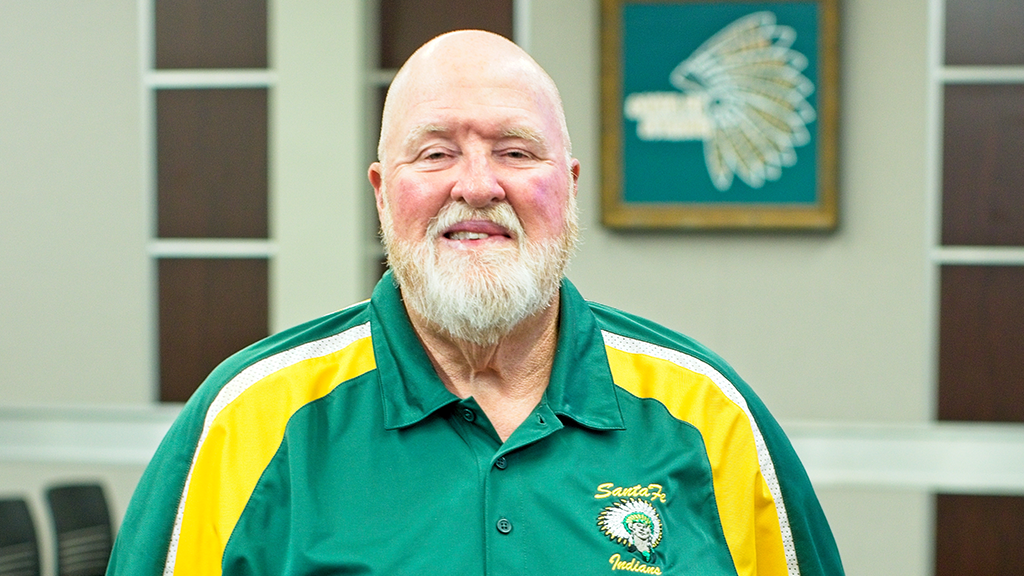
RUSTY NORMAN, WHO WAS SCHOOL BOARD CHAIR IN 2018, CONTINUES TO SERVE.
From one tragedy to the next
For several years, building momentum has been neither easy nor smooth in this small, conservative community about 40 miles south of Houston. In August 2017, nine months before the shooting, Hurricane Harvey damaged 1,000 homes in the 74-square mile district, which also serves parts of unincorporated Galveston County and the outskirts of Texas City, Dickinson, and League City. In March 2020, the pandemic forced schools across the nation to close.
As Harris, a Santa Fe native who has spent all but one of her 22 years as an educator in the district, says: “It feels like we’ve jumped from one tragedy to the next.”
How schools and communities deal with the aftermath of traumatic events — both natural and manmade — has long been a topic of interest for journalists. For me, Santa Fe’s story has a personal twist: The town is just 12 miles from where I grew up, and it’s where I covered my first school board meeting as a local reporter in the mid-1980s.
Four months after May 18, I spent three days in Santa Fe interviewing staff, school board members, and mental health professionals about the long and tentative road to recovery. The story — “After It All Falls Apart” — appeared in ASBJ’s December 2018 issue.
When the shooting at Uvalde’s Robb Elementary School occurred this past May, my thoughts immediately went to Santa Fe and the tragic bond shared by the two districts, which are similar in size and separated by just 300 miles. In terms of mass casualty events on K-12 campuses, the shootings at Uvalde and Santa Fe rank as the second and fifth largest in U.S. history, respectively.
“Our situation was different than what happened in Parkland, Florida, and it was different than what happened in Uvalde,” Norman says. “People think things like this will always happen somewhere else. I would have told you that myself prior to May 18, yet it happened here. We had a high level of confidence that we had good policies and practices in place and good personnel—and evil still managed to do evil.”
Over time, the Santa Fe shooting has not received the same level of national attention or publicity as Uvalde, Sandy Hook, Stoneman Douglas, and Columbine. Many community members are wary of outsiders, and the onslaught of national media attention has been seen by some as both intrusive and insensitive to their trauma and grief. Any discussion of gun control or firearm restrictions, a constant refrain in communities where other school shootings have occurred, is a nonstarter in this close-knit town.
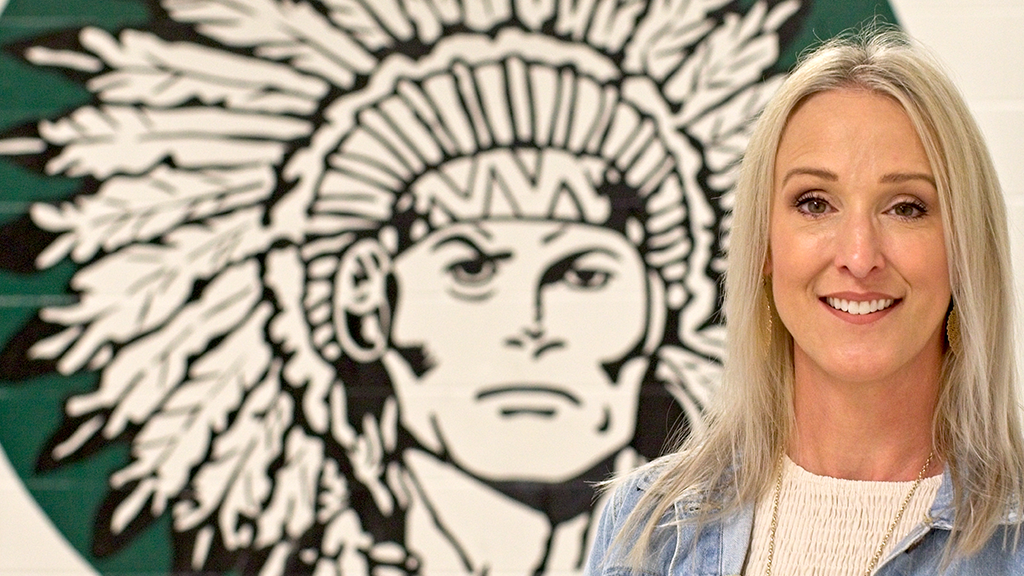
RACHEL HARRIS IS THE PRINCIPAL OF SANTA FE HIGH SCHOOL.
Nonlinear pace
Most of the students killed and injured in the shooting were ninth-graders. While the entire school and community suffered, the aftermath was especially hard on the Class of 2021.
“By far, that class took the brunt of everything — Harvey, the shooting, then Covid,” Harris says. “By the end, they were just done. They had no more drive to get through one more thing. Getting those kids across the stage that year was way more difficult than I’ve had at any other time.”
Jai Gillard, a 2021 graduate, dealt with PTSD, anxiety, and survivor’s guilt after the shooting. She suffered from insomnia and lost weight, but says her mother helped her to “build resilience, learn, and grow from each circumstance.” Most important, she says, she learned “never to take anyone or anything for granted because tomorrow is not promised.”
“Everyone is overcoming something that has changed the whole course of their lives, and learning how to navigate this space,” says Gillard, now a Harvard University sophomore.
As principal, Harris says she has tried to look at the “majorities and the masses.” Her focus was on the students and staff.
“One of the hardest things to communicate to parents and the community is that we have been very active in listening to the kids and what they needed,” she says. “Some want to return to normal; others are not there yet. It never was one or the other. We’ve just tried to pay attention to what our kids are doing and what they’re saying, and for the most part I think we’ve done that.”
In moving forward, it’s important to acknowledge the nonlinear pace at which a community works through trauma and grief, says Melissa Brymer, director of terrorism and disaster programs at the UCLA-Duke National Center for Child Traumatic Stress.
“Trauma and grief do not have the same trajectory,” Brymer says. “We can recover from trauma. You can go into trauma-based treatments, but you never fully recover from the death of a loved one.”
As a sophomore in 2019, Gillard founded ClubHope, a student-led, school-supported organization that brings “awareness to the potential dangers we face.” During her senior year, the club hosted “Fighting the Unknown,” an event that included safety training to help community members learn how to respond to emergencies and disasters. On that day, eight seniors received $1,000 scholarships with money raised from sponsors and donations.
“It is simple to focus on the tragedy rather than the aftermath and the effects on individuals who experienced it,” Gillard says, citing the “lack of normalization” around mental health in rural and marginalized communities. “We must strive to do our best, support one another, and be the hope.”
Hypervigilance
Just after sunrise on a humid, steamy morning — temperatures will reach 100 degrees on the first day of fall 2022 — students gather at the high school entrance. By now, they are used to the practice, one that can be disconcerting to visitors not used to airport-level security on a school campus.
Everyone goes through the metal detector. Backpacks and bags are inspected by a plainclothes security officer as a uniformed policeman keeps watch nearby. Visitors are directed to the information desk, where driver’s licenses are scanned and name badges printed, with the directive that the badges must be returned. Cameras monitor every move.
The hypervigilance may seem extreme, but Santa Fe officials insist it’s all in the interest of security the community continues to demand. “We are not here to police the kids; we are here to police the environment and make the environment safe and secure,” says Ruben Espinoza, who has worked for the school district’s police department since June 2018 and now is chief.
On May 18, Espinoza was 13 days from retirement after 30 years with the Texas Department of Public Safety when he got the call about the shooting. He rushed to the school, then to the central office to help contact state and federal authorities.
“I thought, ‘There’s no way there’s a school shooting in Santa Fe. No way,’” says Espinoza, who now supervises a staff of 19, including seven uniformed officers who are stationed at the district’s five schools. “If it can happen in Santa Fe, in this district, it can happen anywhere.”
In the immediate aftermath, repairing the high school and “hardening” Santa Fe’s campuses became the district’s top priority. The cost: $2 million that came from district reserves.
“We knew we had to bring kids back into the building right before Memorial Day, so we got with our contractors to replace doors damaged during the event and built barriers in the back areas where it took place, so they were isolated,” says Bob Atkins, Santa Fe’s executive director of maintenance and operations. “We wanted it to look like their normal school, not like it did the day they exited the building.”
In five days, 44 doors were replaced. Eleven days after the tragedy, with two days left in the 2018-19 year, students returned to the campus and participated in an assembly with state officials. Three days later, on June 1, graduation was held as scheduled.
Over the summer, audible alarms were put on every exterior door at the high school. Bullet-resistant walls were added at the entrances to every school building, and the central office lobby also was made more secure.
The district received $10.9 million from the state to add police and counselors and to rebuild the section in the back of the school where the shooting occurred. Today, the art rooms remain permanently sealed off, and an outdoor mural covers the bricked-in area where the classroom windows once were.
“We were fortunate this occurred in a very isolated part of the building, and it allowed us the flexibility to work around it,” Atkins says. “We’ll never put students in those rooms. Everyone agrees on that. What we’ll eventually do with that area is still something we’re working through.”
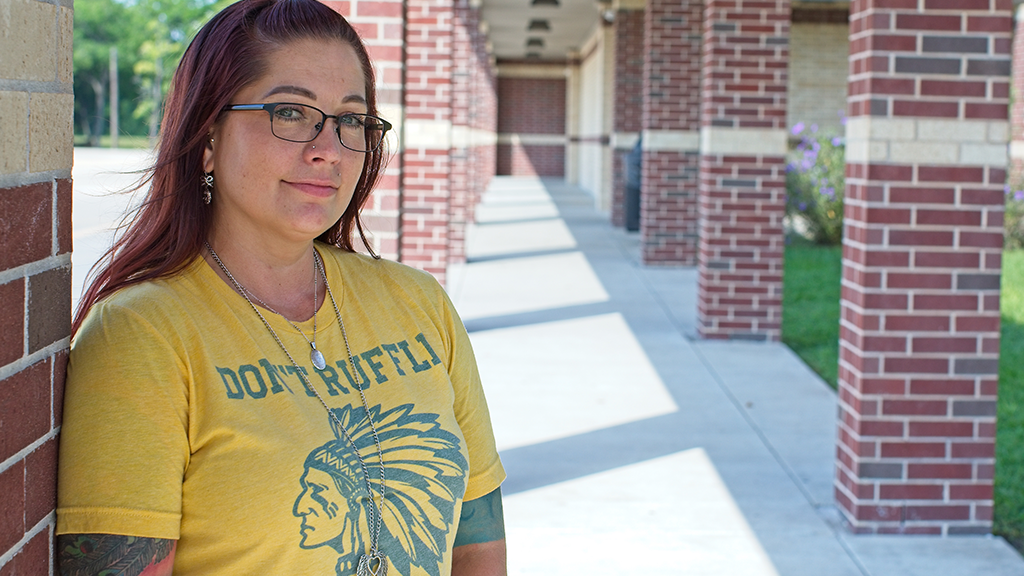
ROBIN TREAT’S DAUGHTER ANGELIQUE RAMIREZ WAS KILLED IN THE SHOOTING.
Black rose and angel’s wings
Robin Treat has a large tattoo on her left arm, a mother-daughter symbol with a black rose and angel’s wings. Treat and her daughter, Angelique Ramirez, had planned to get the same tattoo when the latter turned 18, but that day never came. Angelique was one of the students killed on the morning of May 18.
“She was the most thoughtful, kind human being in the world. She cared for everybody that was different,” says Treat, now a licensed specialist in school psychology who works primarily at the middle school. “She loved on everybody who needed someone to love on them. She sought those people out.”
Treat’s youngest son, Amadeus, has autism, and she started pursuing her degree after seeing the care he received from his school psychologist. For 10 years, she went to school at night while working multiple jobs, including substitute teaching. Now, she says, her job has “given me the prime opportunity to have a hand in helping people heal. It puts me on the front line.”
This is Treat’s first media interview. In the onslaught of attention following the shooting, she says reporters were “ruthless.” When she refused to give interviews, she says the media “poached whatever they could get” from social media posts and “made up what they wanted” about her daughter.
She did the interview with ASBJ at the urging of Bott, a first-time superintendent who came to Santa Fe following the June 2021 retirement of Leigh Wall, who had been in the position for 14 years. In his first week in the district, Bott reached out to the families of the shooting victims to introduce himself and give his condolences. He told them he wanted to get to know them better as the district moves into this “new phase of healing.”
“One of most difficult things to do is rebuild trust in a community that’s had a tragedy like this,” Bott says. “I wanted them to know I’m available to them at any time. I tried to reassure them that they all have a direct line to me. I think that’s the least we can do.”
Treat, who received one of those calls from Bott, appreciated the gesture. “If you don’t have transparency with families and parents, there’s no trust,” she says. “Parents have to know their children are going into a building where they’re going to be loved and cared for.”
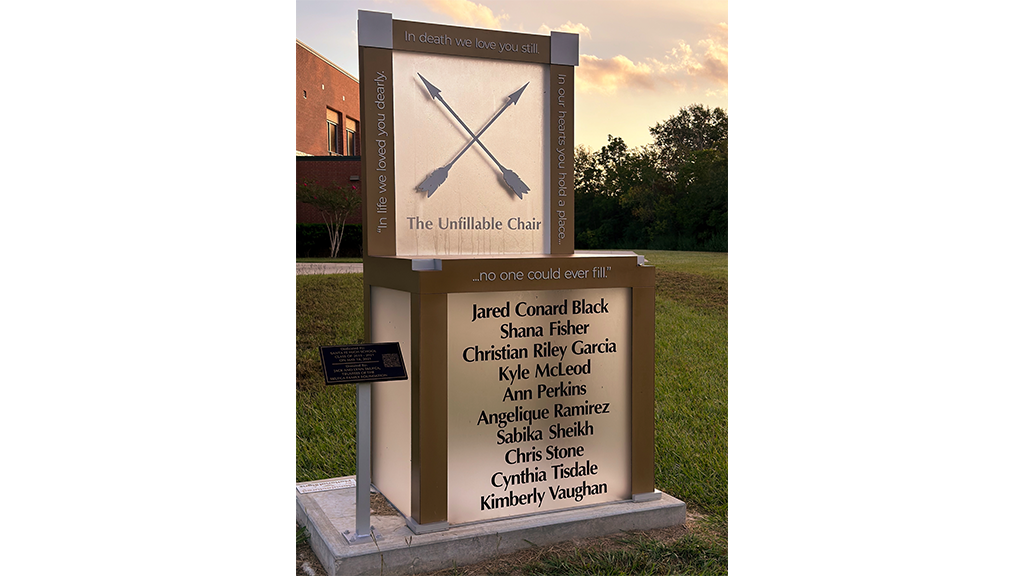
THE UNFILLABLE CHAIR IS A STUDENT-DESIGNED TRIBUTE TO THE VICTIMS.
‘I didn’t want to abandon them’
For Harris, watching employees and children struggle day in and day out was exhausting. The mother of two daughters, one of whom was on campus that day, she was determined to “protect the kids, protect their interests, and protect the teachers’ interests.”
“Prior to May 18, we had an already established family atmosphere in the high school and the district,” she says. “When we first came back, everyone was driven to help. It made it more difficult for some to leave even when they should have, because they weren’t healing well and weren’t moving on from what happened. They just couldn’t get past walking into the same building every day.”
The 2019-20 school year was hardest on the staff and ended with the largest amount of turnover. “That’s when the anger and the hate came in,” Harris says. “They were angry that they couldn’t do anything to prevent what happened. Everyone was still dealing with trauma and trauma is ugly.”
At the urging of her husband, a military veteran who had been deployed to Iraq, Harris saw a therapist to deal with PTSD. She also stayed off social media and away from the news for more than a year.
“First responders are required to get therapy after something like this, and I think educators should be too,” she says. “For the people who were on the front lines of this, we would all always check on each other, but we weren’t doing OK. All of us would say we were fine, and we’d never allow ourselves to say we weren’t. We had everyone else to worry about. Over time, it affects you.”
Despite the turmoil, Harris has remained in her job. “I didn’t want to abandon them,” she says of her staff and students. “That’s probably what kept me there during the toughest years. After it started to subside, the love just came back. It was just…”
She pauses. “When a school goes through a tragedy like this, once you start to heal you recognize why you loved being there in the first place. I think that’s why I’ve stuck around.”
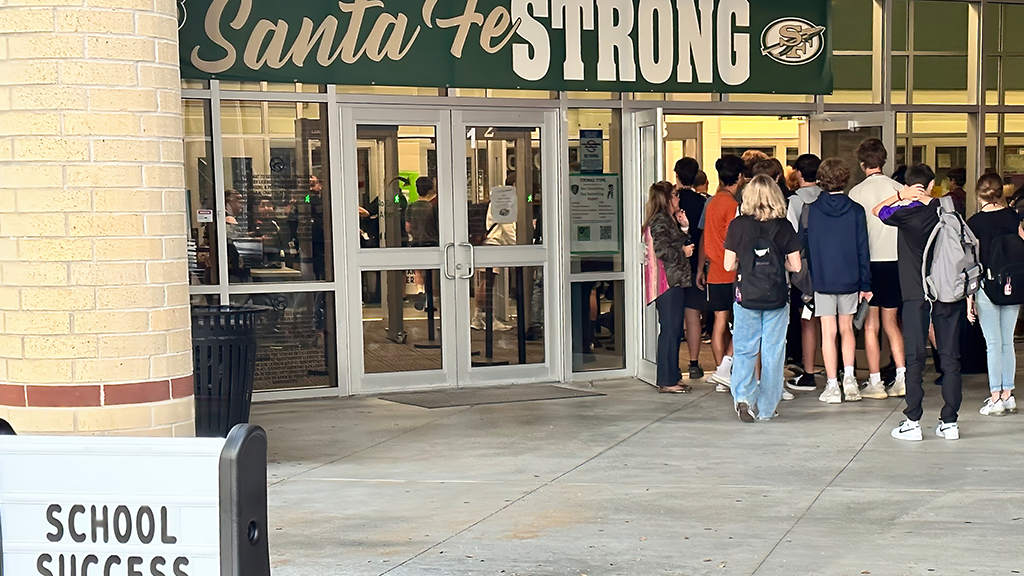
SANTA FE HIGH SCHOOL STUDENTS GO THROUGH SECURITY EVERY MORNING.
‘Lingering issues remain’
As the fifth anniversary of May 18 approaches, lingering issues continue to hover over Santa Fe, including the fate of the shooter and a permanent memorial for the victims. Dimitrios Pagourtzis, the student charged with multiple counts of capital murder, has been declared mentally unfit to stand trial three times since 2019. Another hearing is scheduled in February 2023.
In mid-October, after the victims’ families pushed the board to select an on-campus site for a future memorial during a fiery meeting, school board members unanimously voted not to build it on the high school grounds. The Santa Fe Ten Memorial Foundation has been working for years to raise funds for the $1.6 million memorial, but the board cited concerns about safety, traffic, and ongoing emotional distress to students and staff. “The Unfillable Chair,” a foundation supported, student-designed tribute to the victims that was installed on the southeast side of the campus, remains on the site.
Meanwhile, after years of repeated trauma for students, staff, and community members, concerns about mental health remain. Since 2018, the state has spent $7 million on mental health services in Santa Fe, but extra funding for school-based counselors has decreased each year. The district continues to work with the Santa Fe Resiliency Center to provide services to students and staff. The center continues to serve 150 to 200 clients a month in a strip mall near the high school.
Looking ahead, Santa Fe faces another large transition — “inevitable growth,” as Norman describes it — despite cuts in state funding. The district has not reduced staff or services despite a post-shooting, post-Covid attendance decline, hoping it can hold out as new home construction booms due to Greater Houston’s sprawl.
A large subdivision is being built in the city of Santa Fe, and two are going up outside the city limits in areas served by the district. One subdivision within the district’s boundaries, in southern League City, is expected to add 10,000 homes over the next decade. Within 20 years, district officials estimate that enrollment could reach 15,000 to 20,000 students.
Voters, however, have rejected two bond referendums that would help the district prepare for future growth. The first, a $110 million referendum that would have built a new middle school, was voted down 65-35. The second, a smaller referendum whose centerpiece was a career and technical education wing for the high school, was rejected by 2 percentage points.
“It’s a work in progress,” Norman says. “People are learning how to trust the district again, and time has been kind to us. They know we are committed to safety and security, and we will never forget what happened on May 18. But we can’t dwell on it anymore. We have to continue to move forward.”
Glenn Cook (glenncook117@gmail.com), a contributing editor to American School Board Journal, is a freelance writer and photographer in Northern Virginia.

Share this content